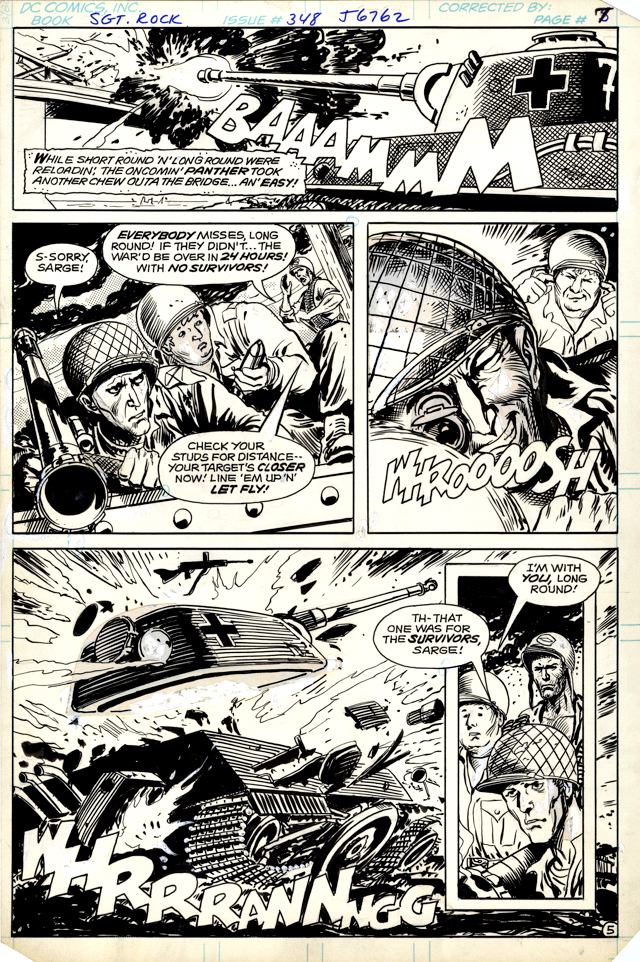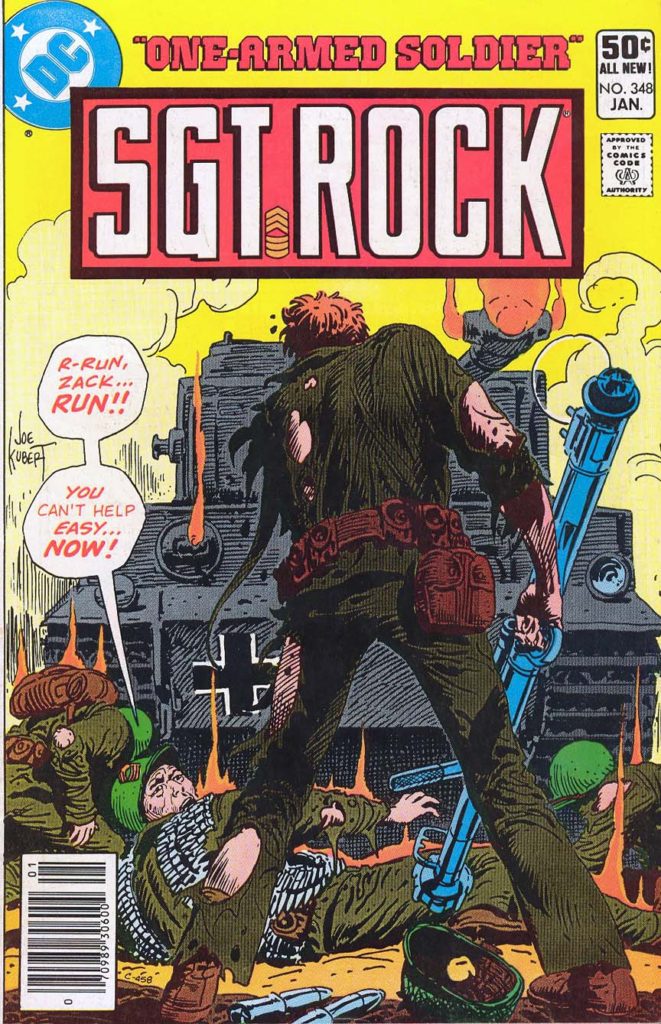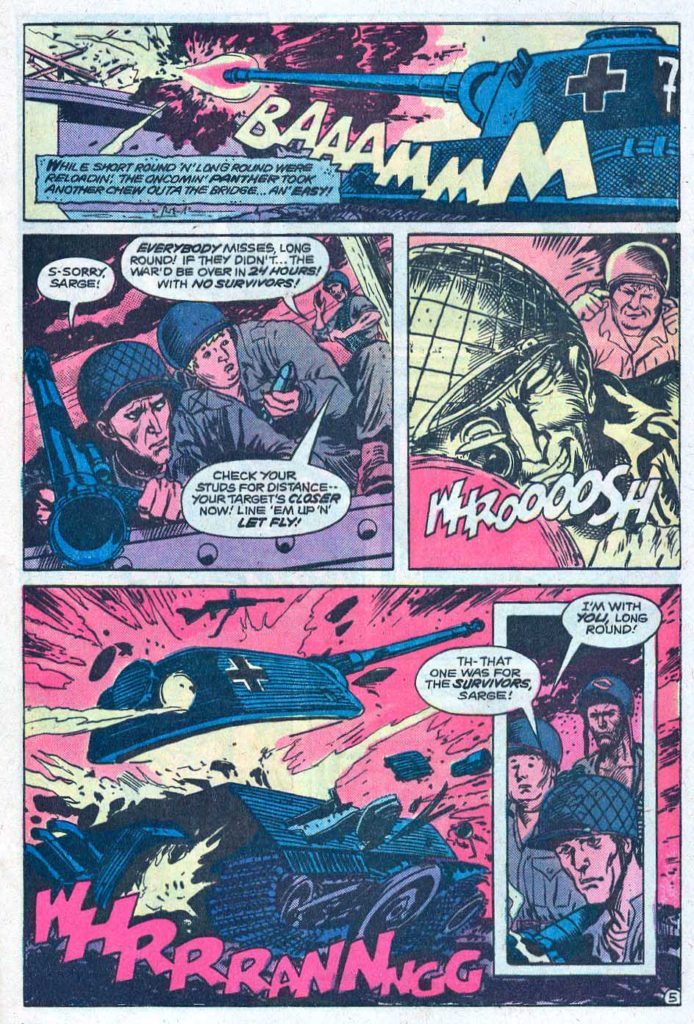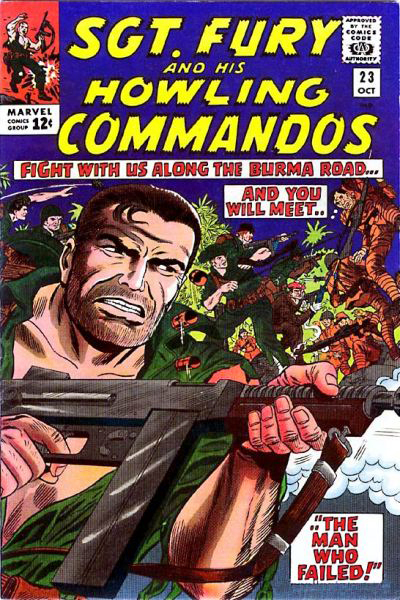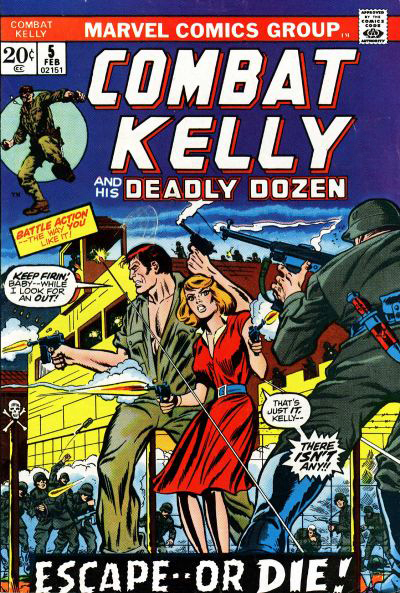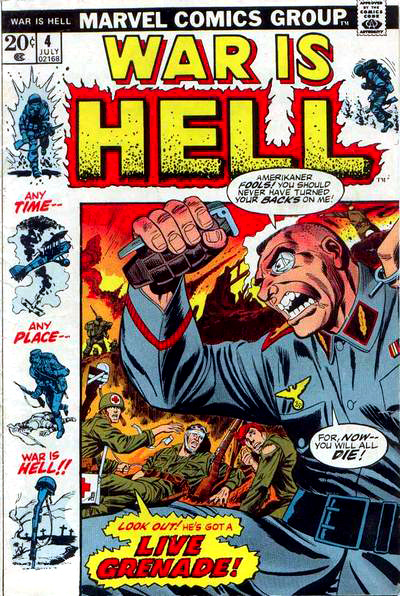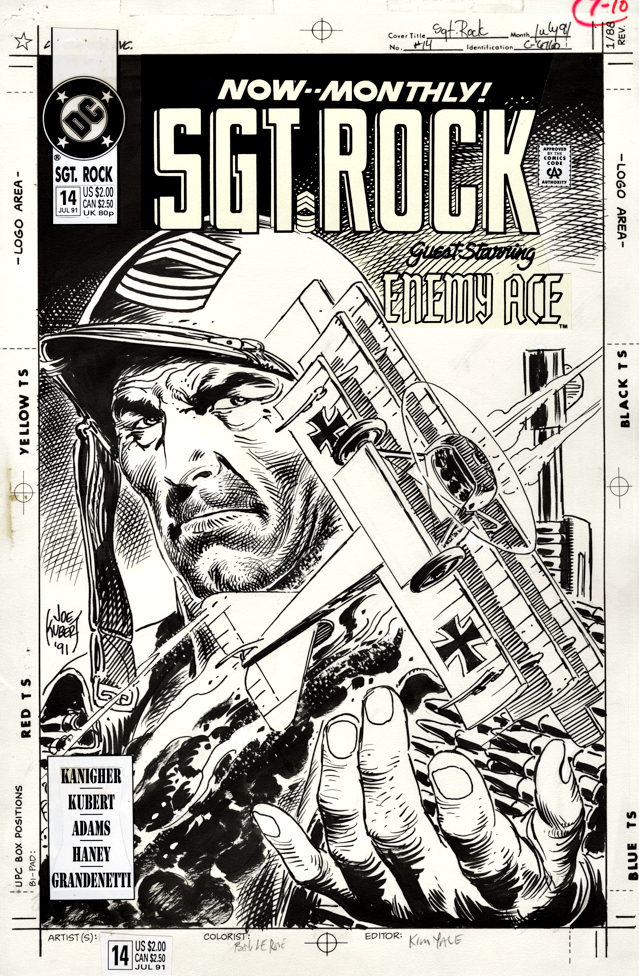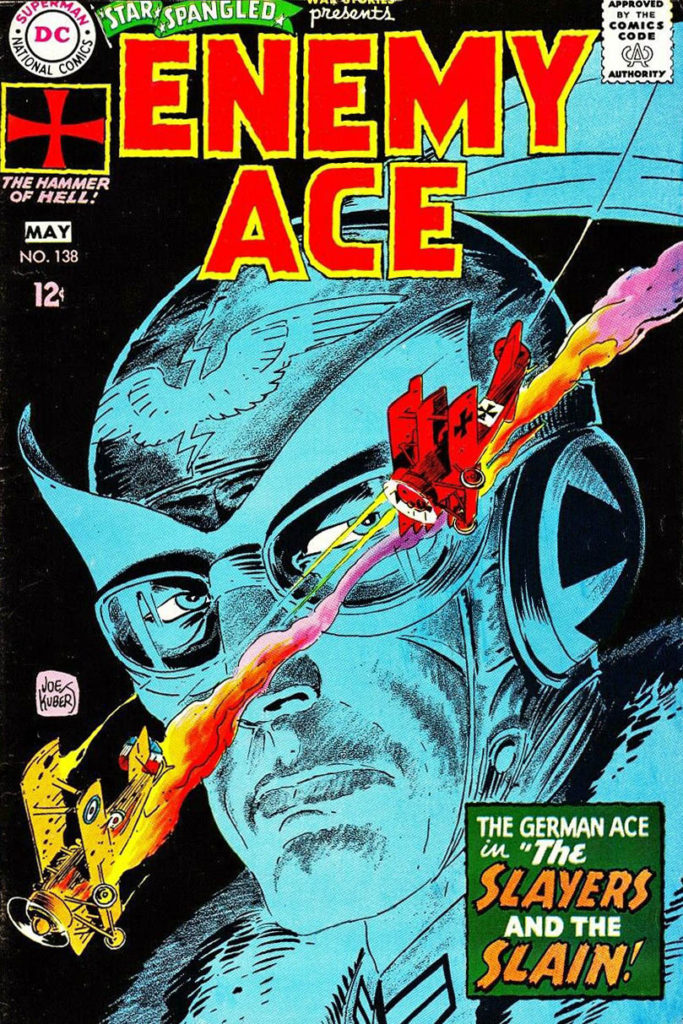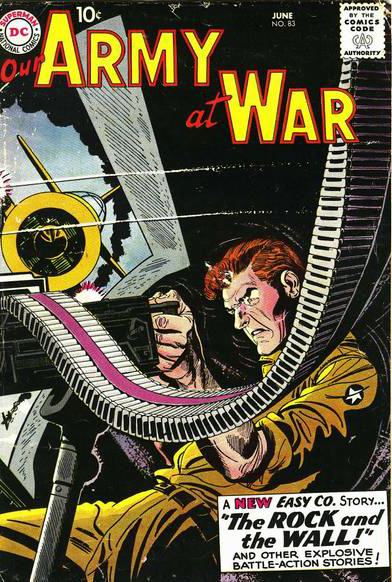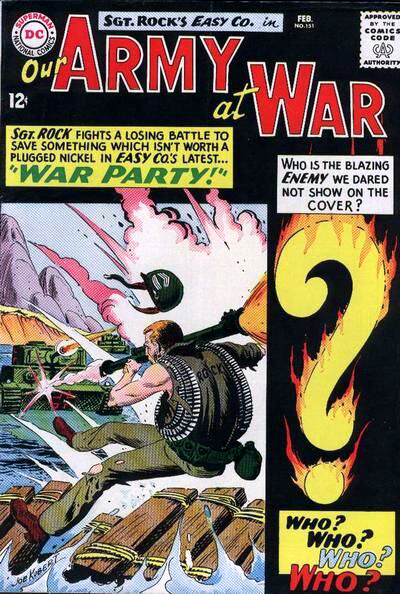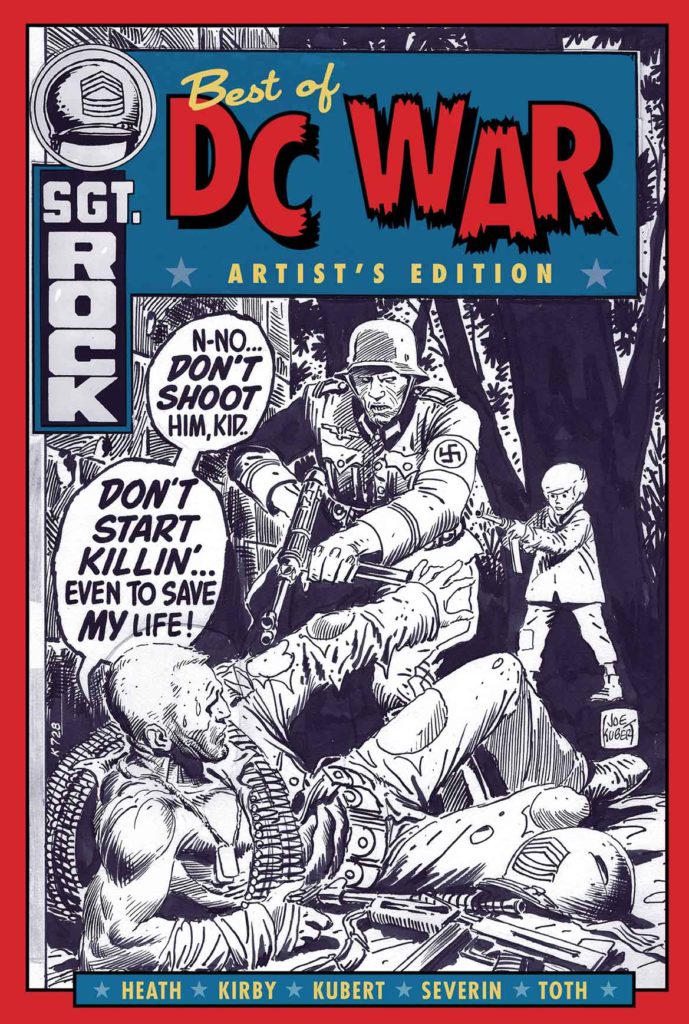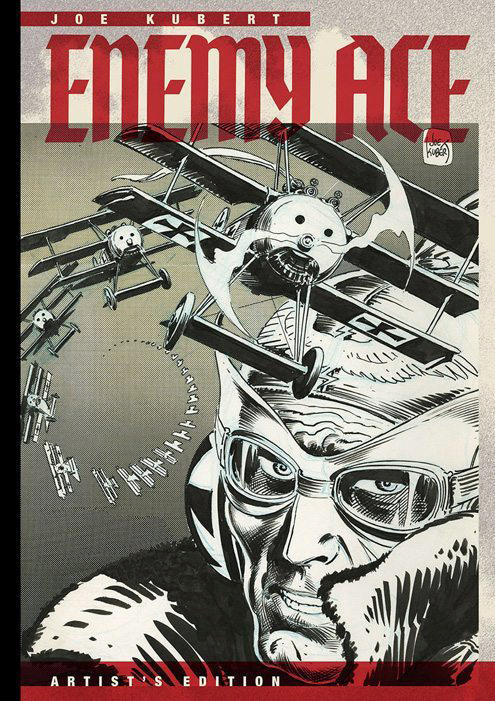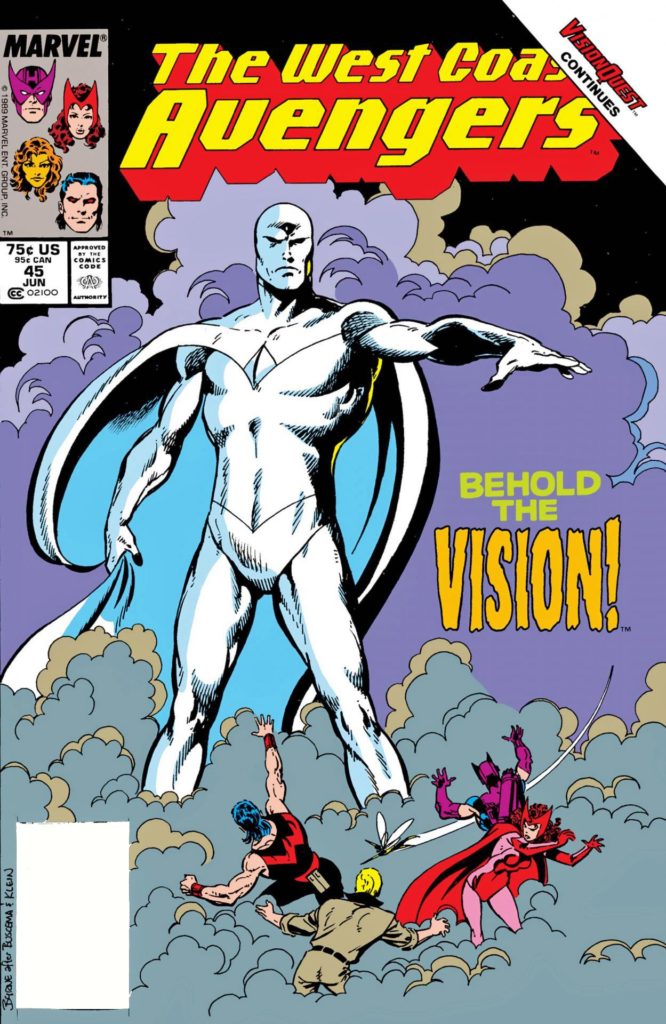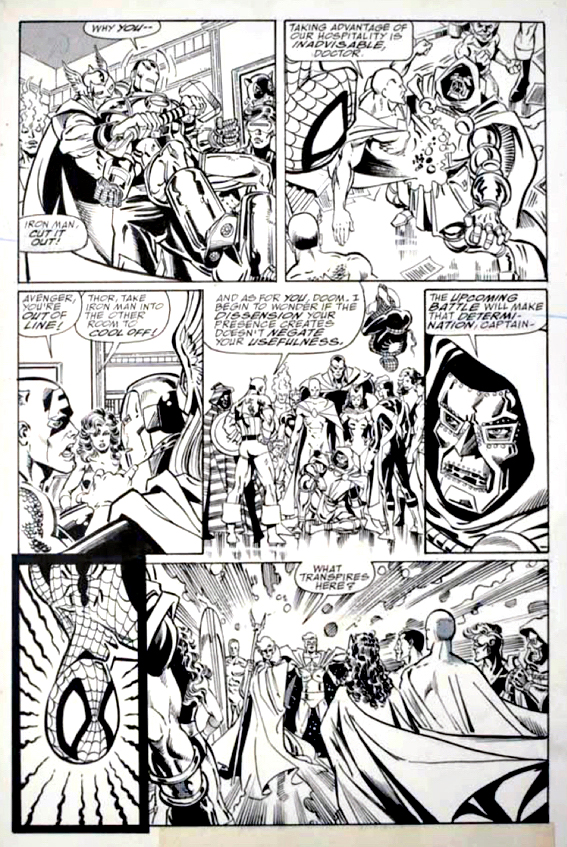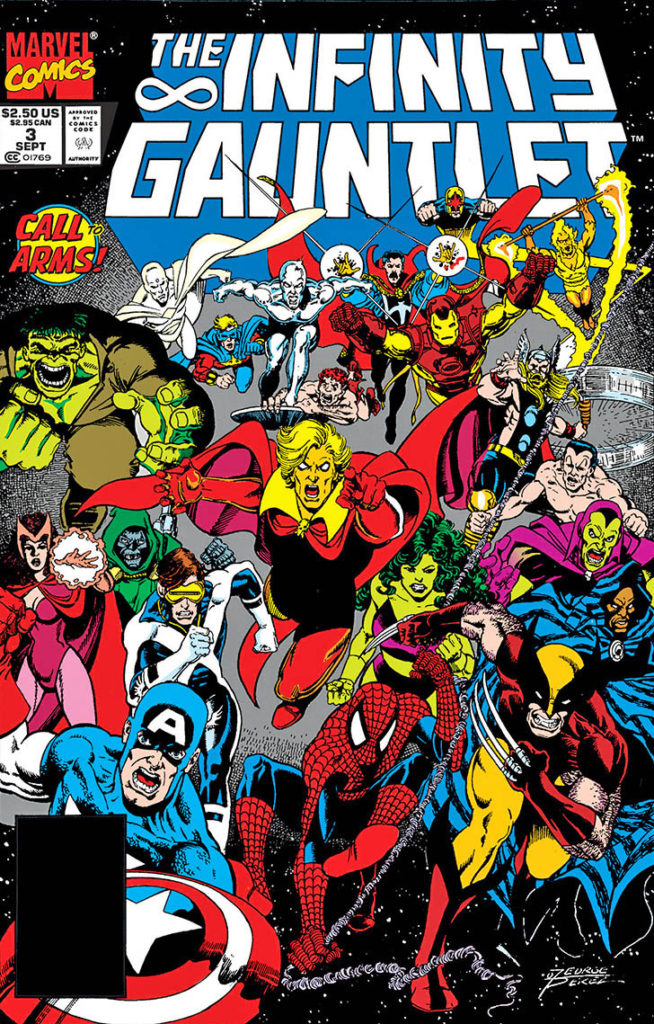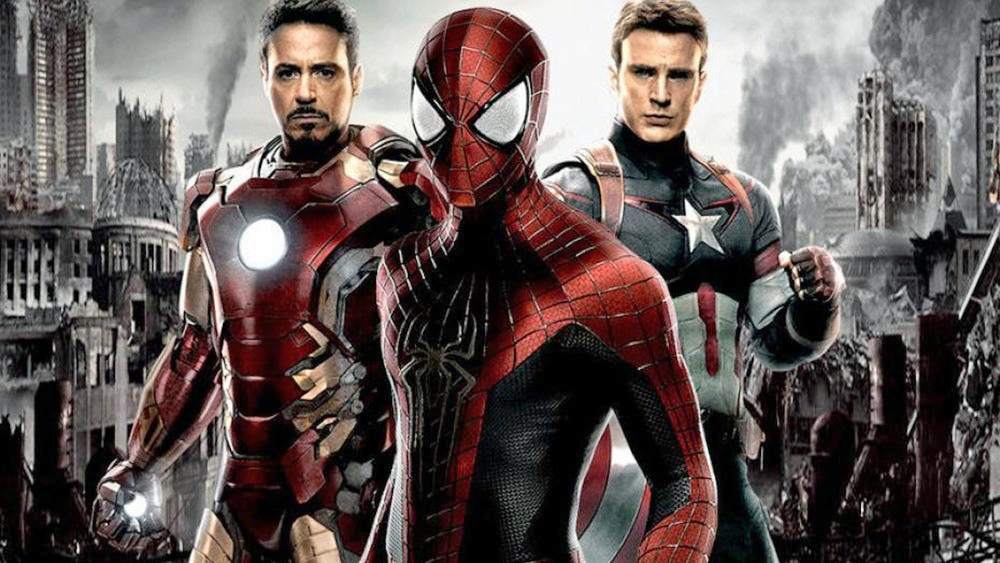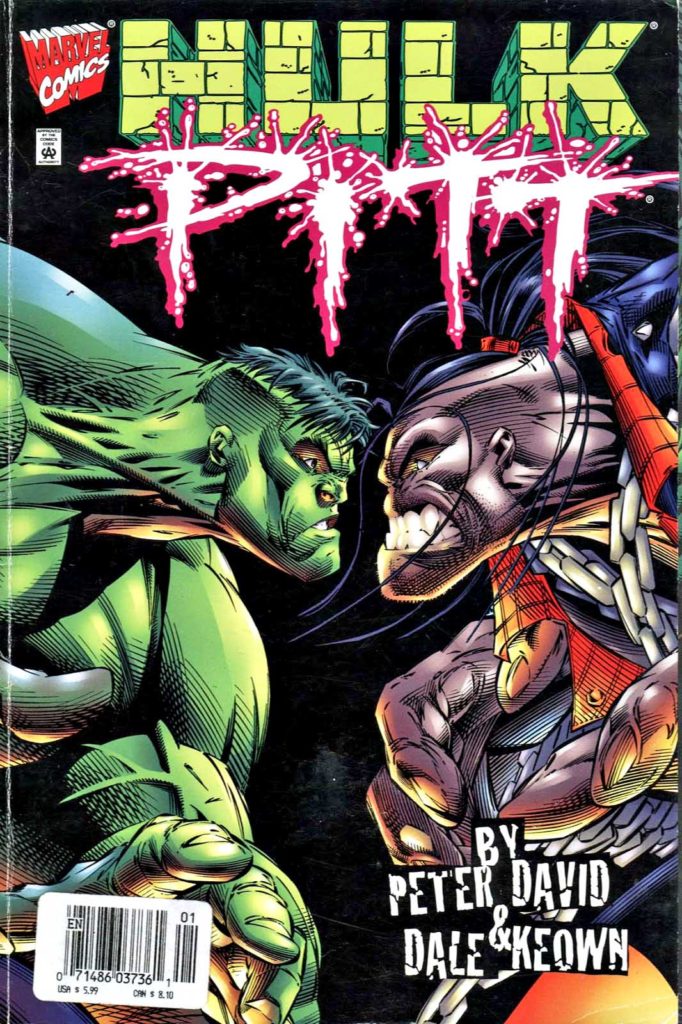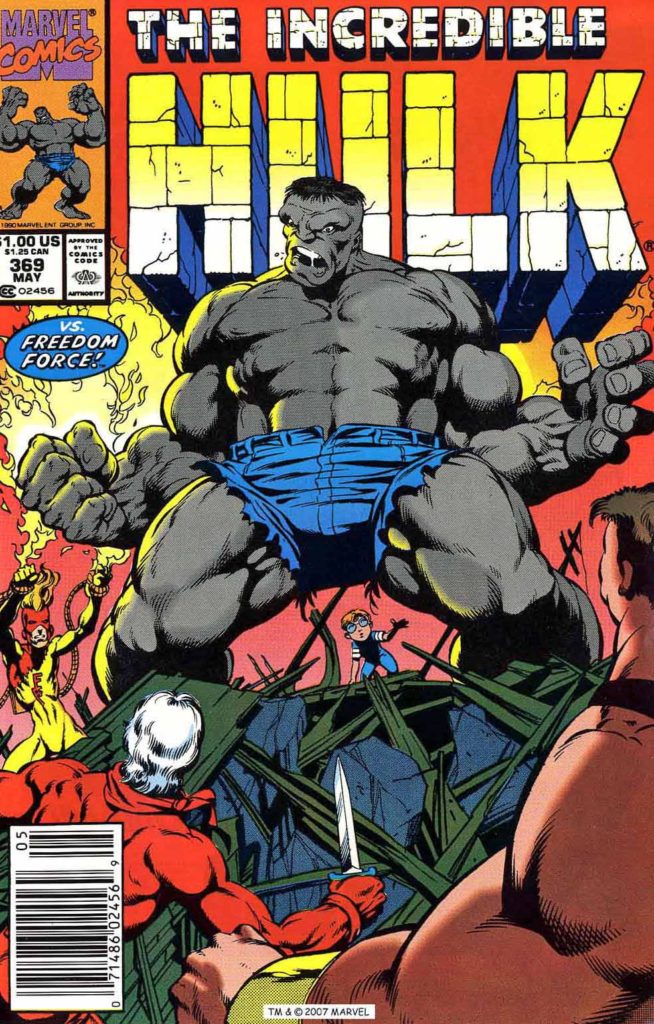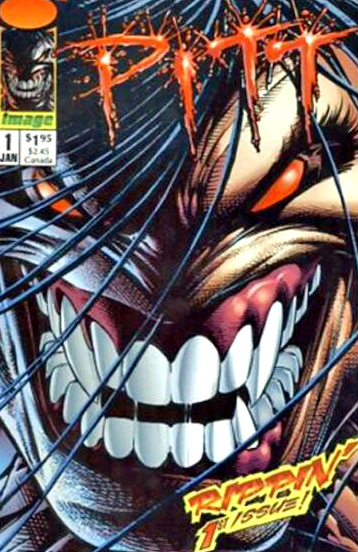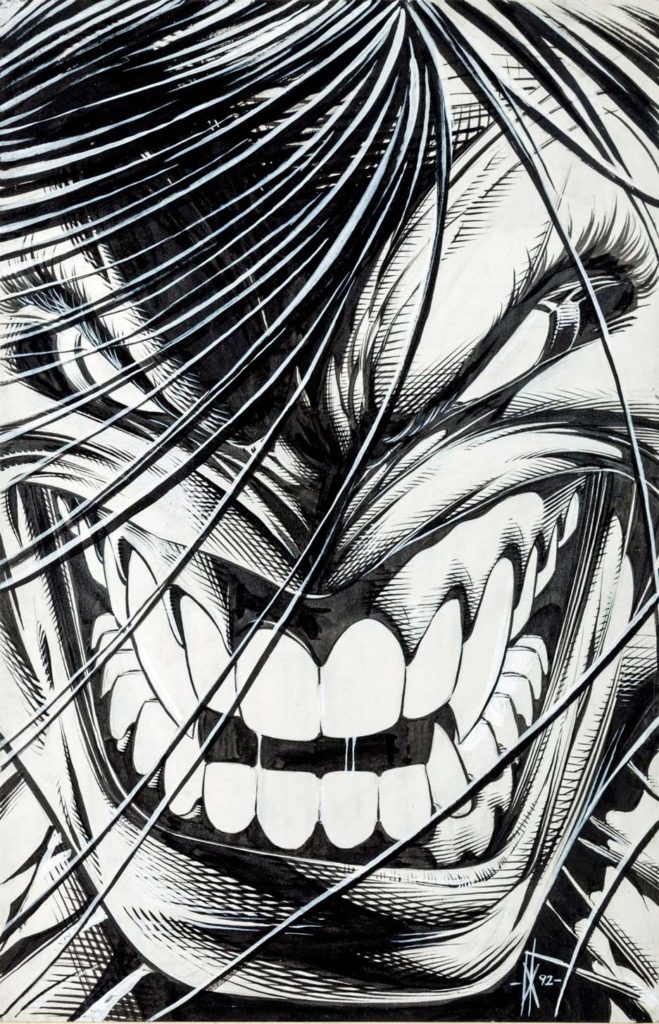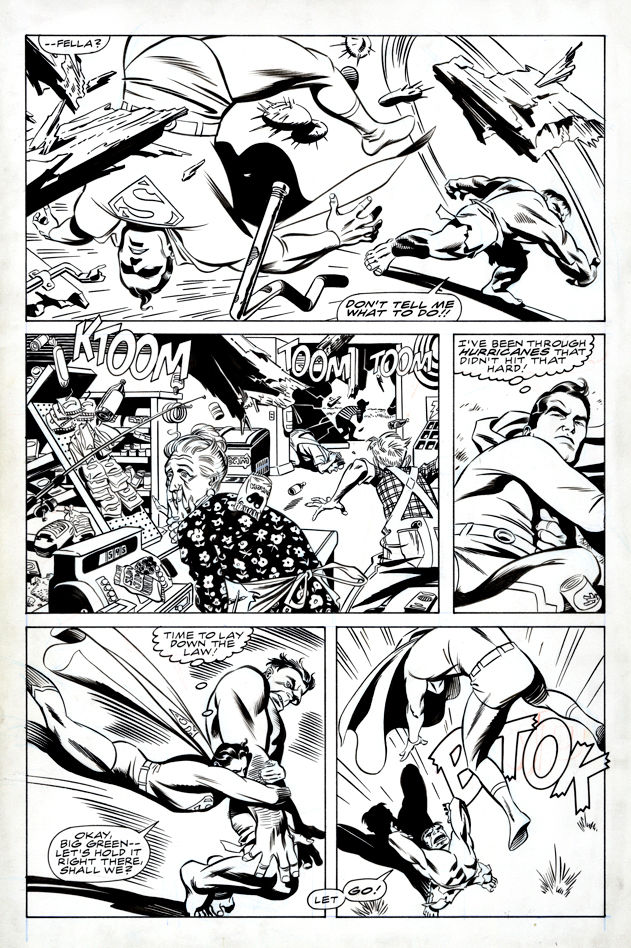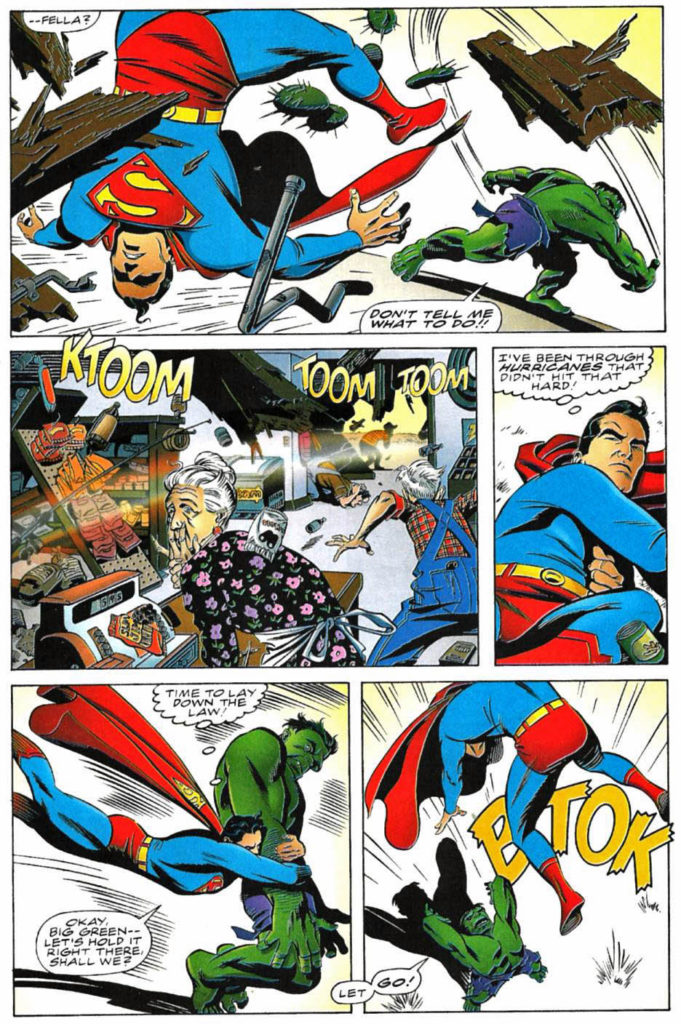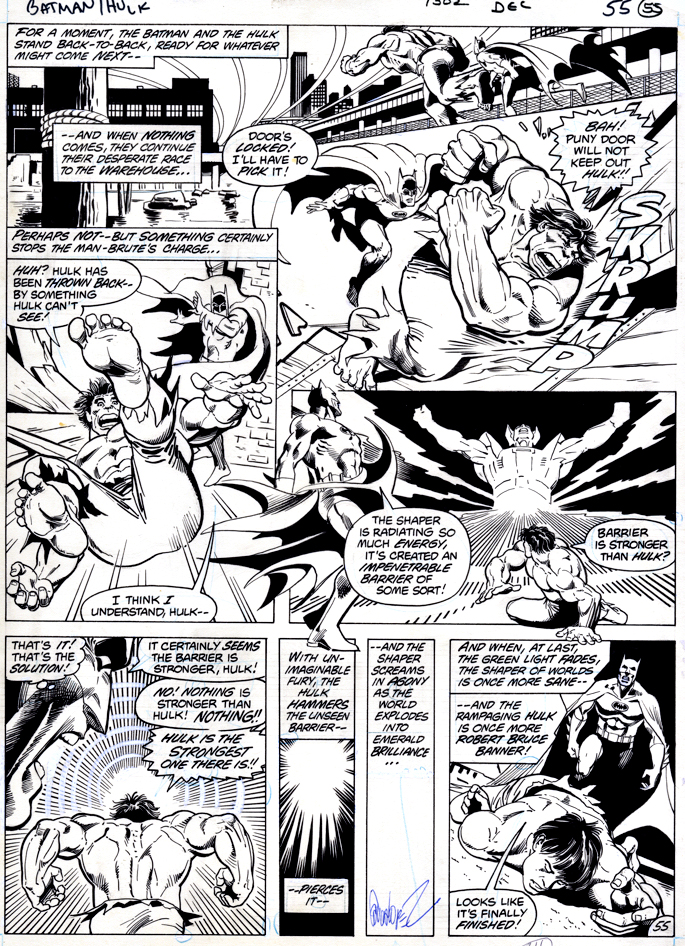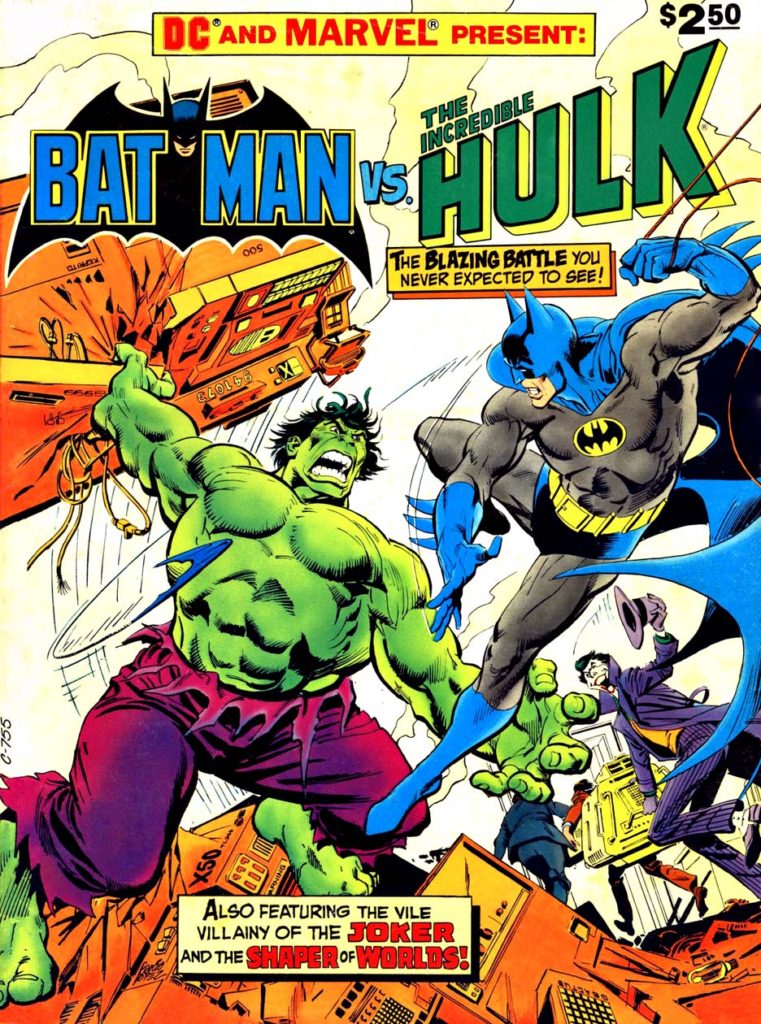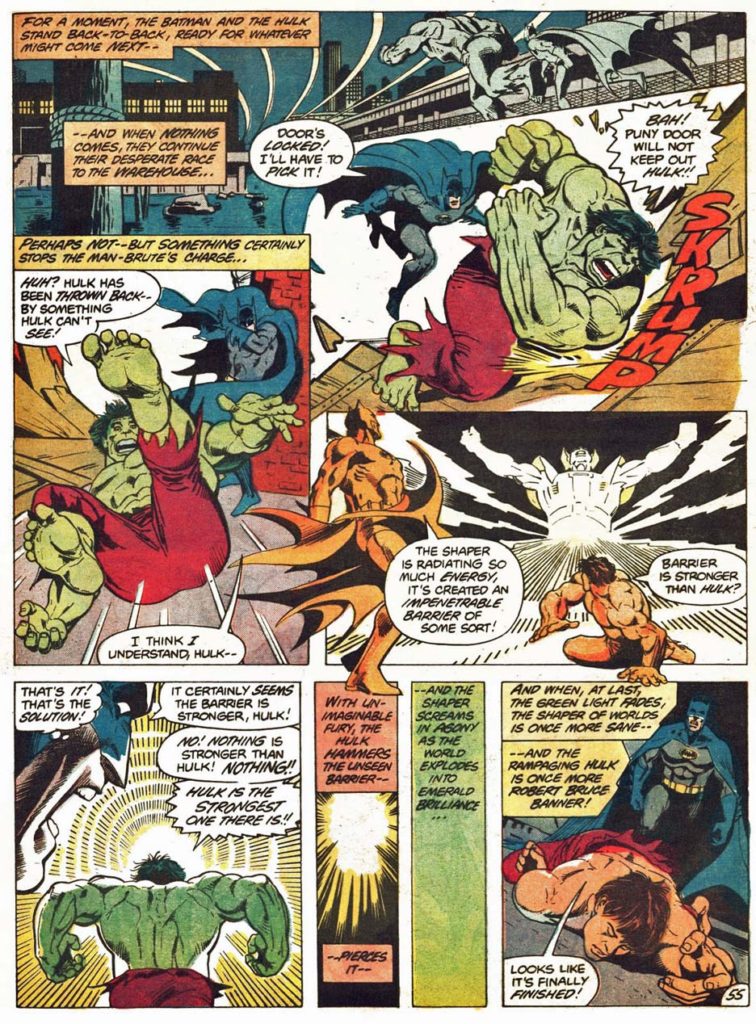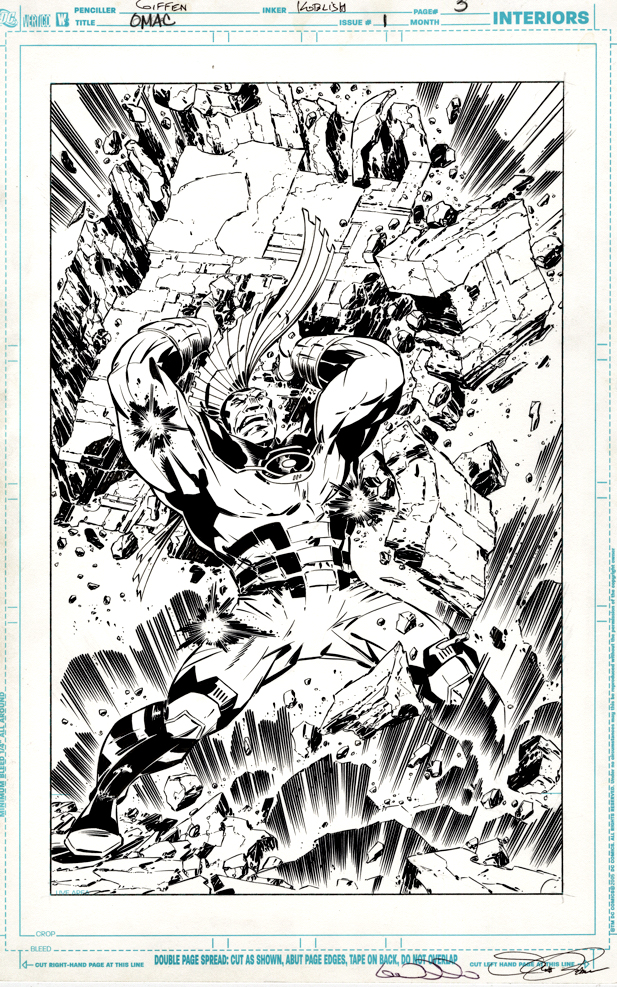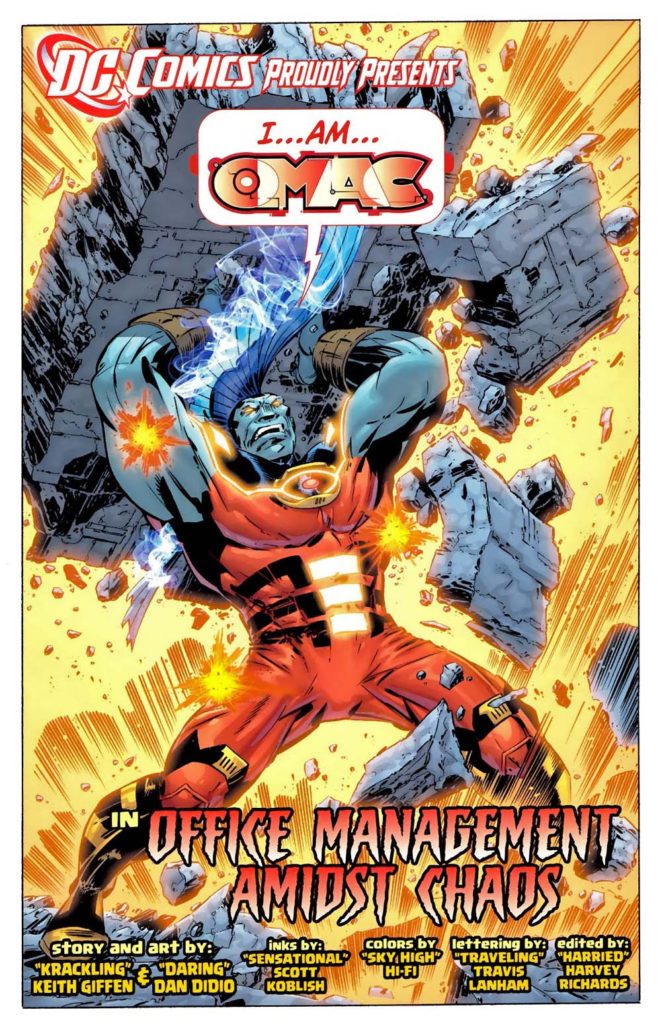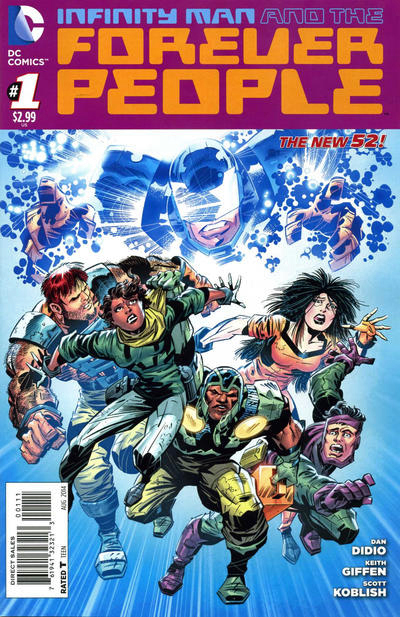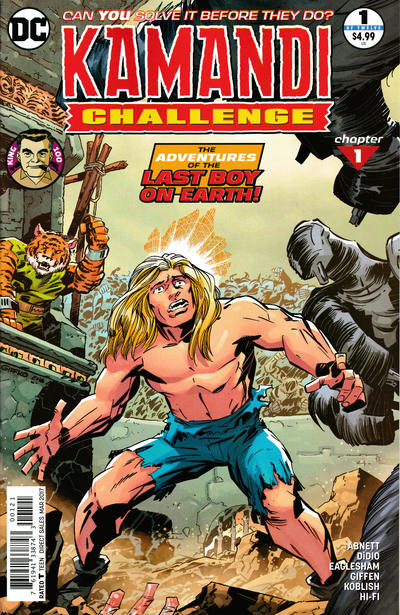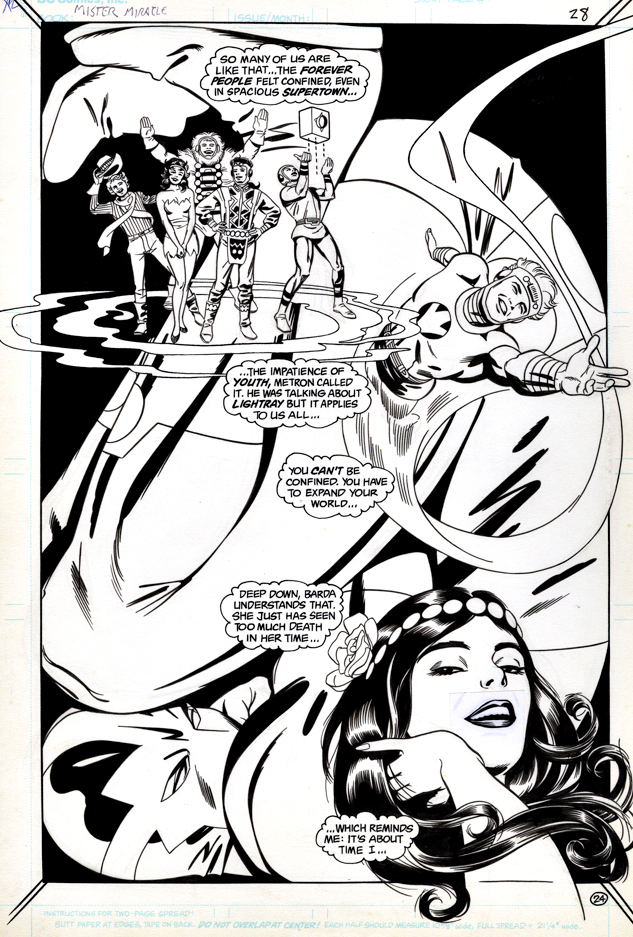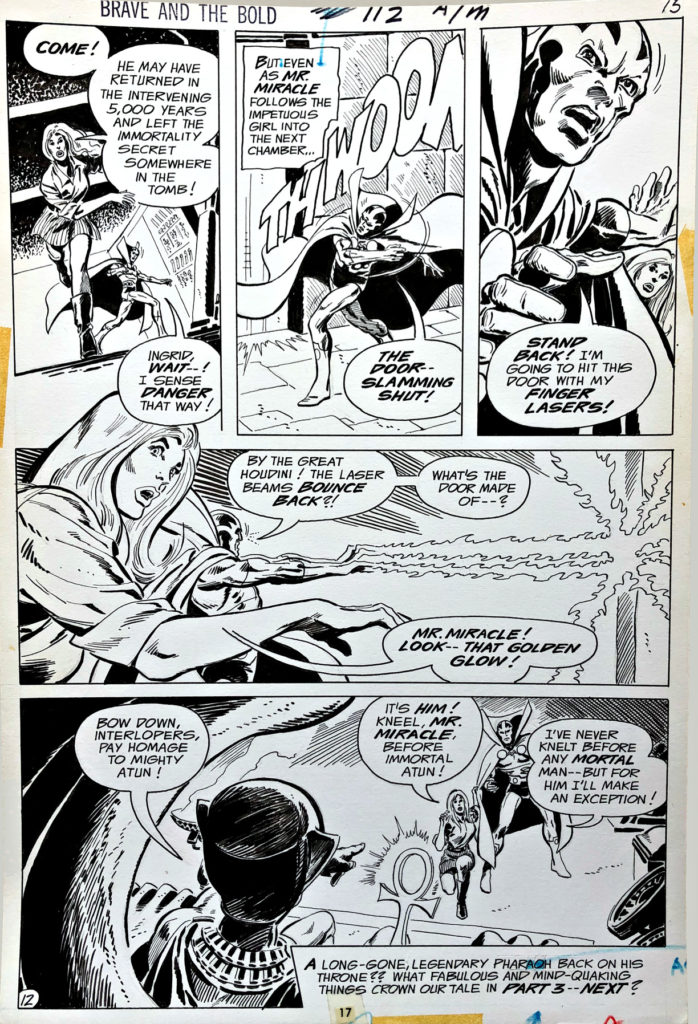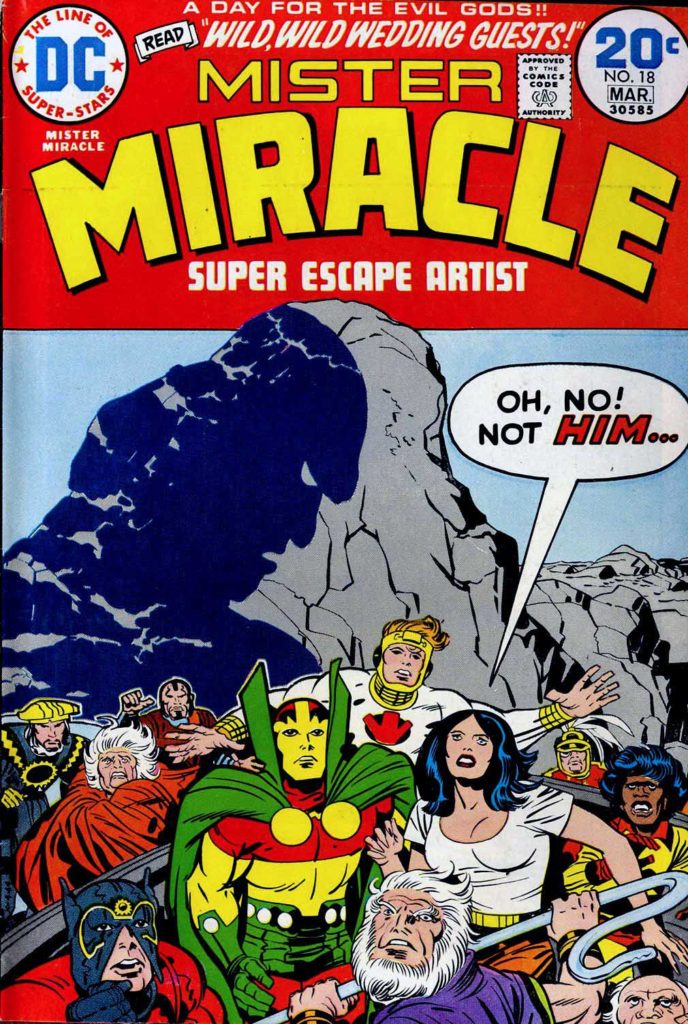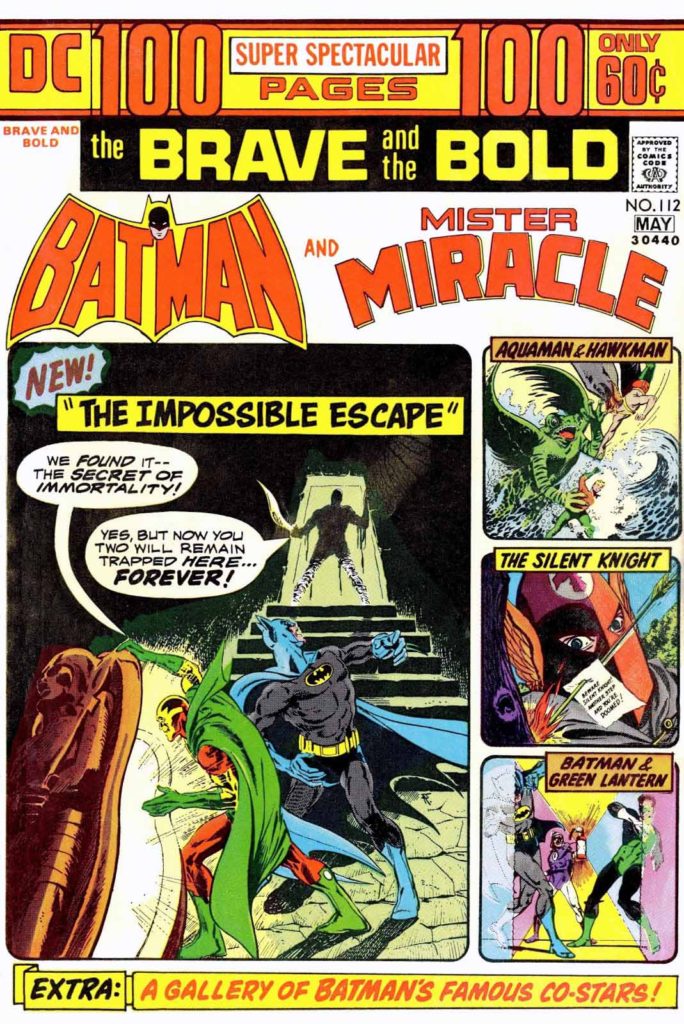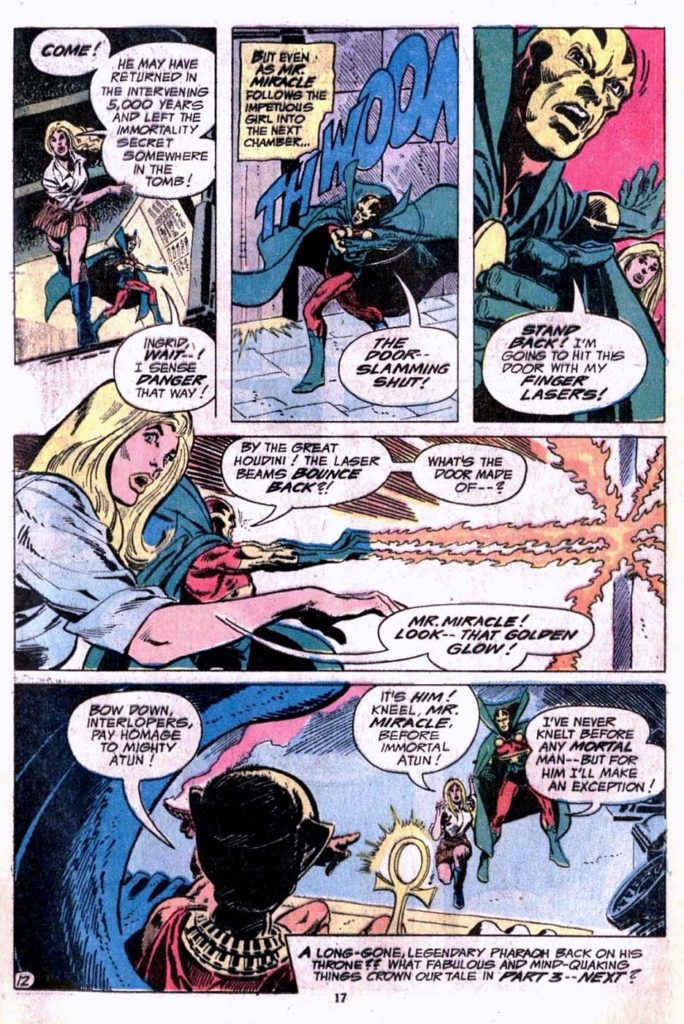Dick Ayers (w/Joe Kubert) — One-Armed Soldier
Sgt. Rock #348, January 1981
When I acquired this great looking page years back, I remarked (to no one in particular): “Gee, who knew Dick Ayers could draw like Joe Kubert?”
Duh. Thanks to the amazing Grand Comics Database (GCD), and an interview with inker Ron Randall, I find out that there’s an excellent reason for the look and feel of the draftsmanship: Kubert drew some of the art as well. (And Ron is a graduate of the Kubert School.)
Official credits in the printed issue belong Ayers and Randall, inker, but given the many retouches and corrections on the page (and likely throughout the entire story) it should have been a bit more obvious to me that Joe had a hand in the art. From the Randall interview:
“My first comics work was a few short stories in the back of the old Sgt. Rock. Many, many years ago. What I most remember was the rare and priceless opportunity to work one-on-one with Joe Kubert himself as he took me through the steps of layouts, pencils and inks on these short tales. It was getting personal attention from a master. And the lessons I learned from those jobs have shaped my views on comics and storytelling to this day.” — Ron Randall
I’ve seen Ron at quite a few conventions over the years, so when cons come back, I can potentially put the rest of the puzzle pieces of this particular story together. (Like how Dick Ayers actually fits into this.) If Ron remembers, that is.
(I know I seem remember things from 40 years ago. I just can’t remember what I had for lunch yesterday.)

